
- •CONTENTS
- •PREFACE
- •Pencils
- •Papers
- •Accessories
- •Holding the Pencil
- •Pressure
- •Movement of the Hand
- •Lines and Strokes
- •Introduction
- •Observation and Recording
- •Landscape Sketching
- •Trees
- •Trees in the Foreground
- •Trees in the Background
- •Landforms
- •Water
- •Architecture
- •Sketching the Cityscape
- •SKETCHING FROM MEMORY
- •EXAMPLES
- •INDEX
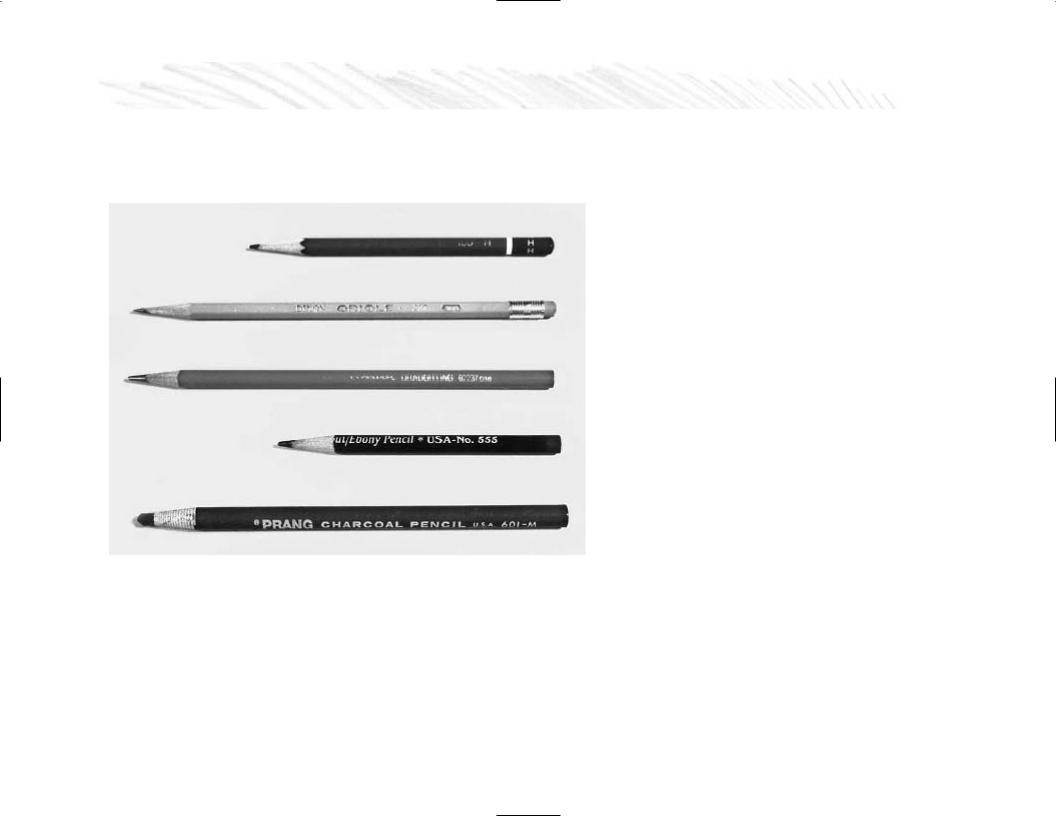
MATERIALS AND EQUIPMENT 2
Pencils
Different types of sketching pencils
I always recommend that beginners start with the lowly number 2 yellow pencil. Number 2 is equivalent to HB grade in terms of the hardness of the lead. Its markings are medium in darkness and the lead has a moderate wear, which means that it doesn’t need frequent sharpening. It handles well and has a friendly touch. It’s a perfect pencil for a beginner.
There are many types of pencils that do more or less the same task. The key is to find the few that you are comfortable with. An ordinary pencil comes in different grades from high Bs to high Hs. Harder pencils have the H markings and softer pencils bear B markings. Hard pencils are used primarily for drafting and technical purposes because the hard lead can maintain a very thin, sharp, and consistent line. It was very popular among architects before the age of computers because small and tidy lettering was required to accompany the carefully prepared architectural drawings. However, these high-H pencils are not suitable for normal sketching and drawing purposes. But soft pencil is ideal. Softer leads create darker values and they glide more easily on paper. Yet, because the point of the lead will wear away quickly, the lines from a soft pencil will inevitably become wider and less consistent.
7
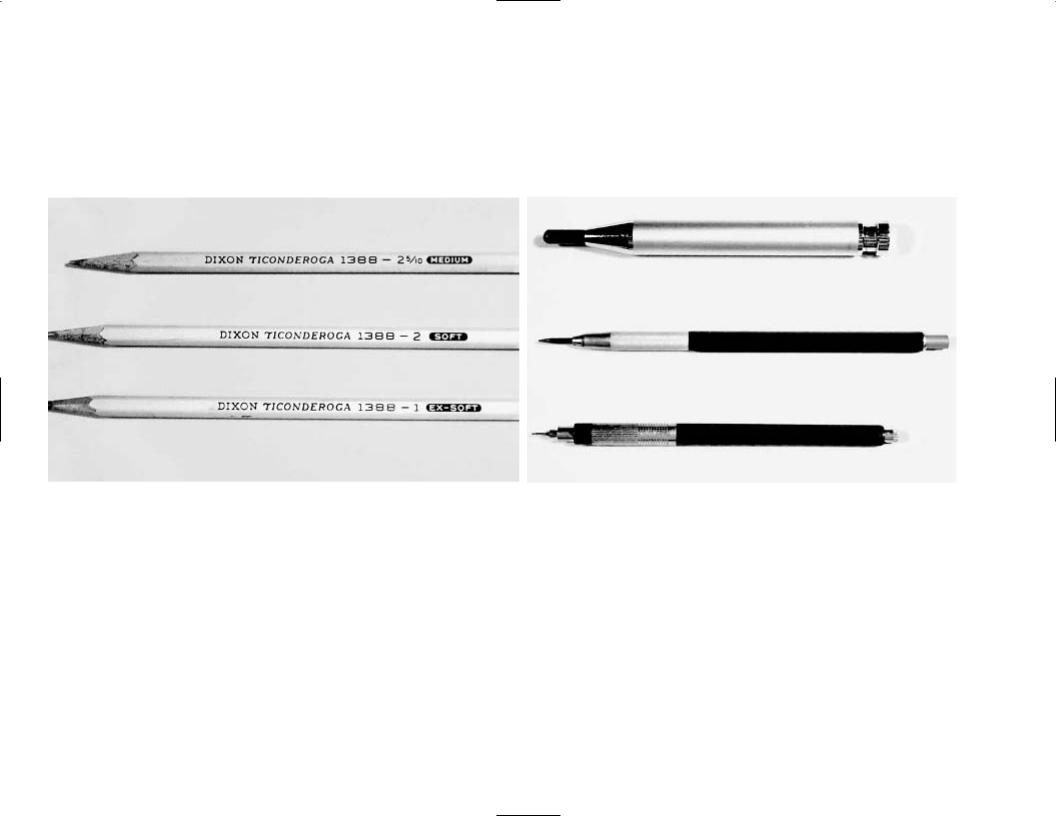
TYPICAL PENCIL VARIETIES medium = 2 or HB
soft = 3 B extra soft = 6 B
TYPICAL LEAD HOLDERS
•the top holder holds 1⁄4" diameter soft lead
•the other two are mechanical lead holders for drafting only
8
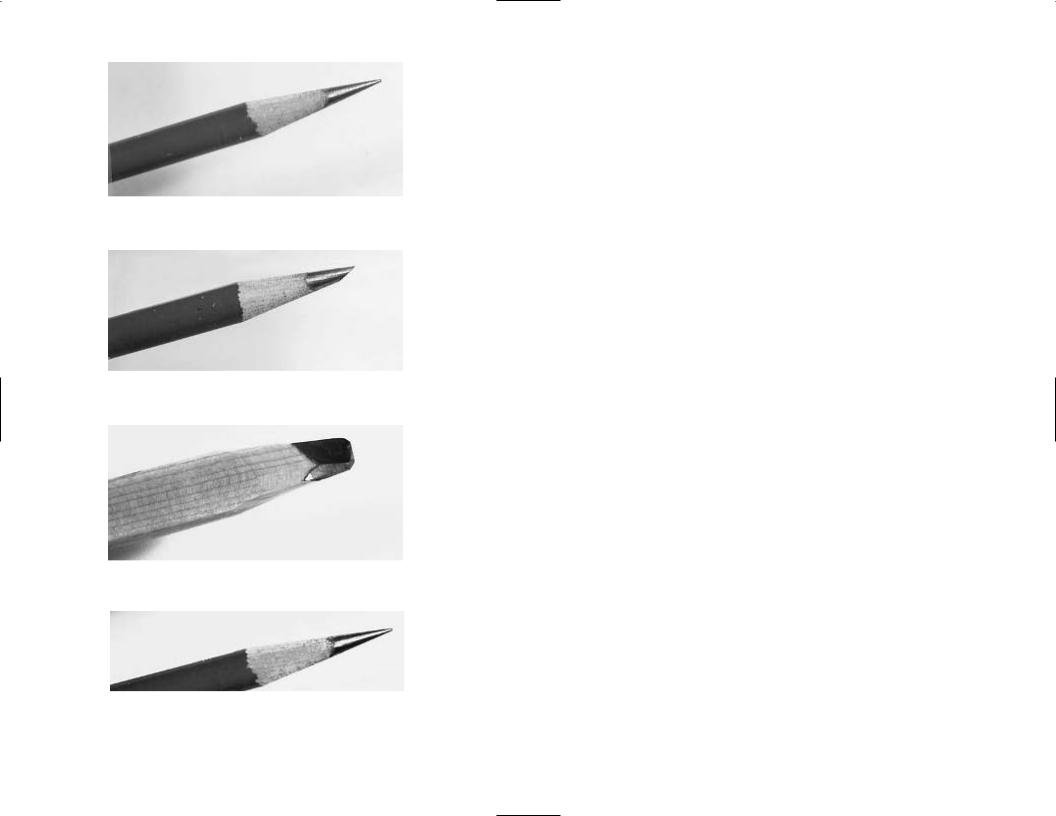
Mechanically sharpened 314 pencil
Chisel point after repeated use
Rectangular pencil
314 draughting pencil
There are also charcoal pencils, layout pencils, flat sketching pencils, ebony pencils, etc. Charcoal pencil has a charcoal core and it works just like regular charcoal stick except for the fact that the tip can be sharpened like a pencil. Because it is encased in wood, it is a lot cleaner to use. I like the flat sketching pencil because it contains a square or rectangular lead that becomes a flat chisel when sharpened. It produces wide, broad strokes with many dynamic variations when twisted and turned. One of my favorites is the classic “draughting” pencil commonly known as 314. It has a rounded, dark brown wood casing with the lead no less than 1⁄8" in diameter. Because of the large lead, the exposed tip of the 314 is about half an inch long after sharpening. The long tip is valuable in sketching because it can do so many things from making a thin line to a broad half-inch stroke by holding the pencil on its side. It has dark values and the tone is very intense.
9
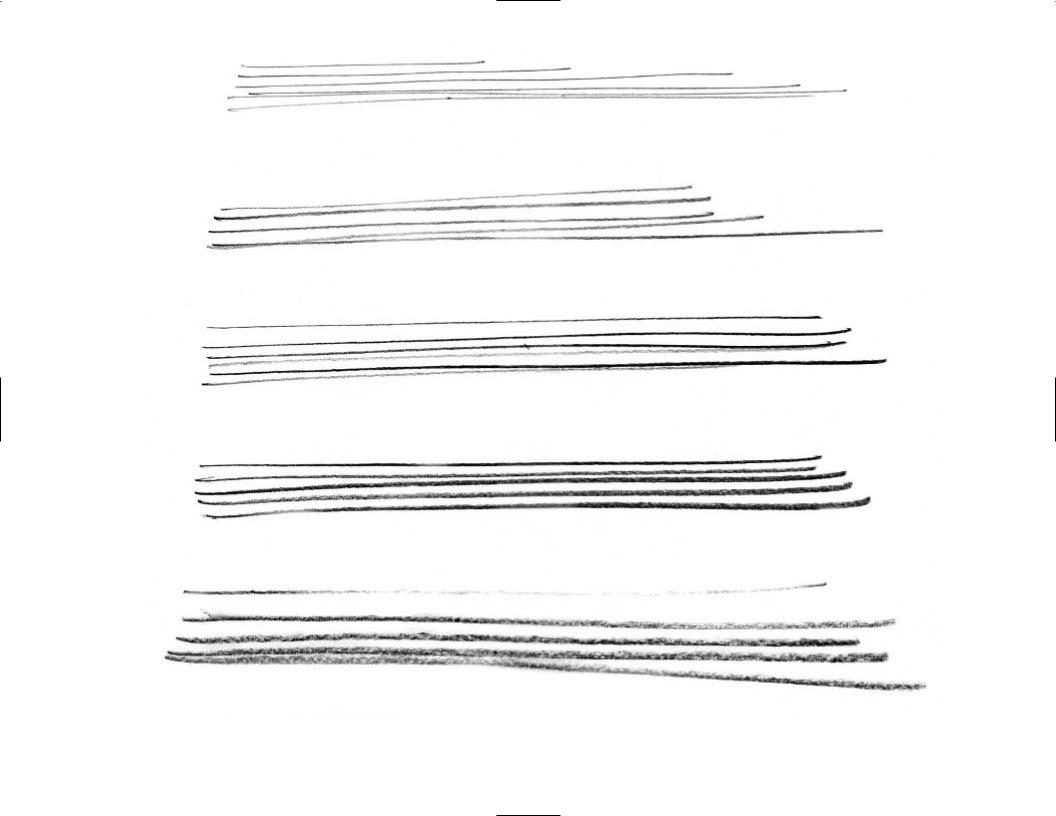
Five major pencils and the differences in line quality.
Mars Lumograph H
2/HB (regular pencil)
314 (draughting pencil)
Ebony pencil
Charcoal
10
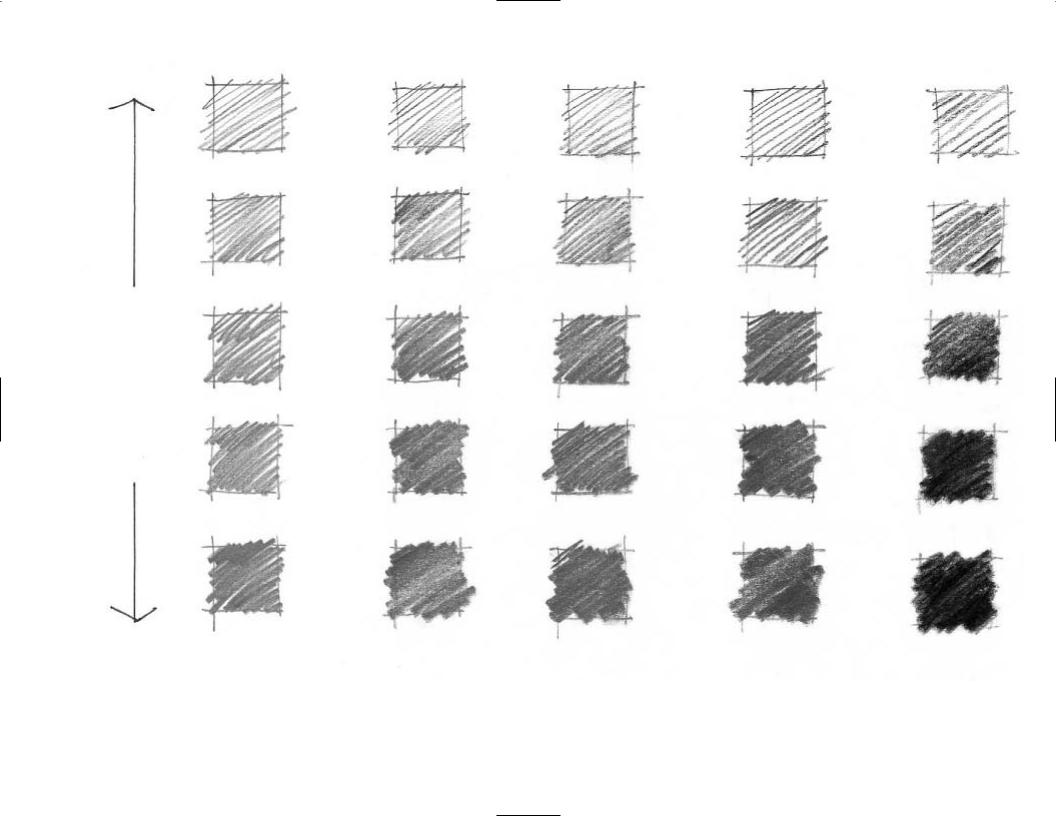
Light
Pressure
Hard
Mars Lumograph H |
2/HB (regular pencil) |
314 (draughting pencil) |
Ebony pencil |
Prang charcoal |
11
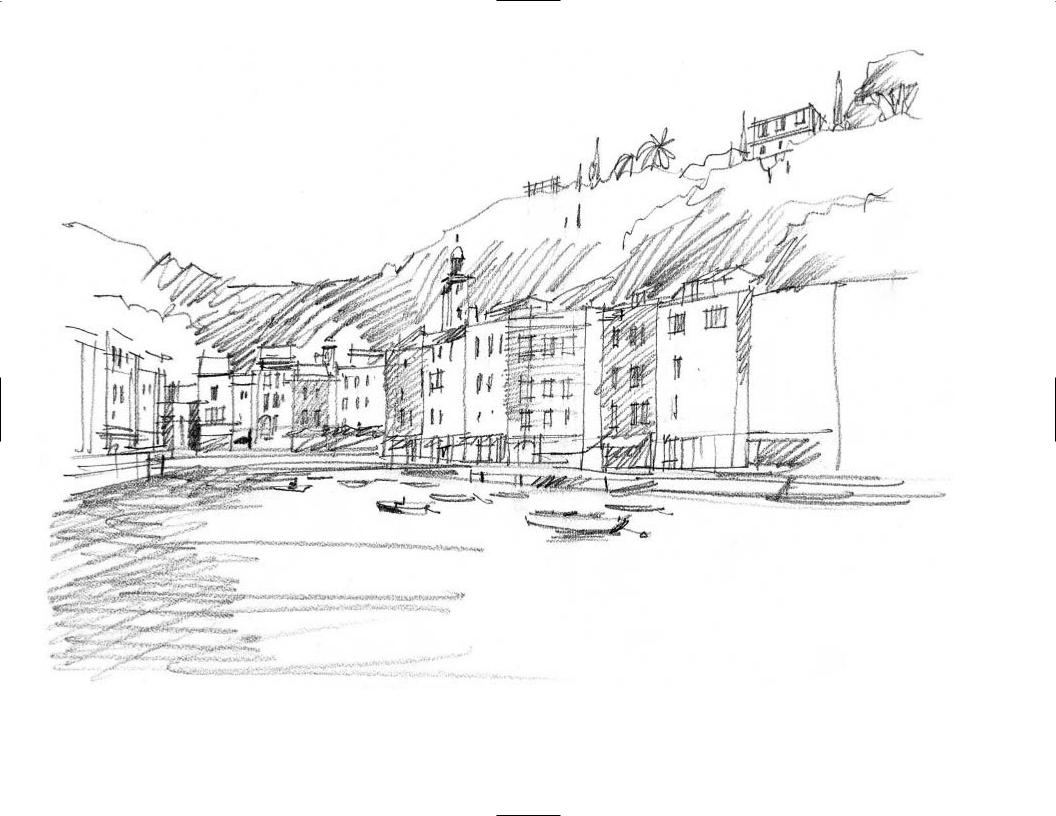
Quick sketch using 314 pencil on sketching vellum. The soft pencil and the fine tooth of the vellum surface are
perfect partners in sketching . (Portofino, Italy)
12
